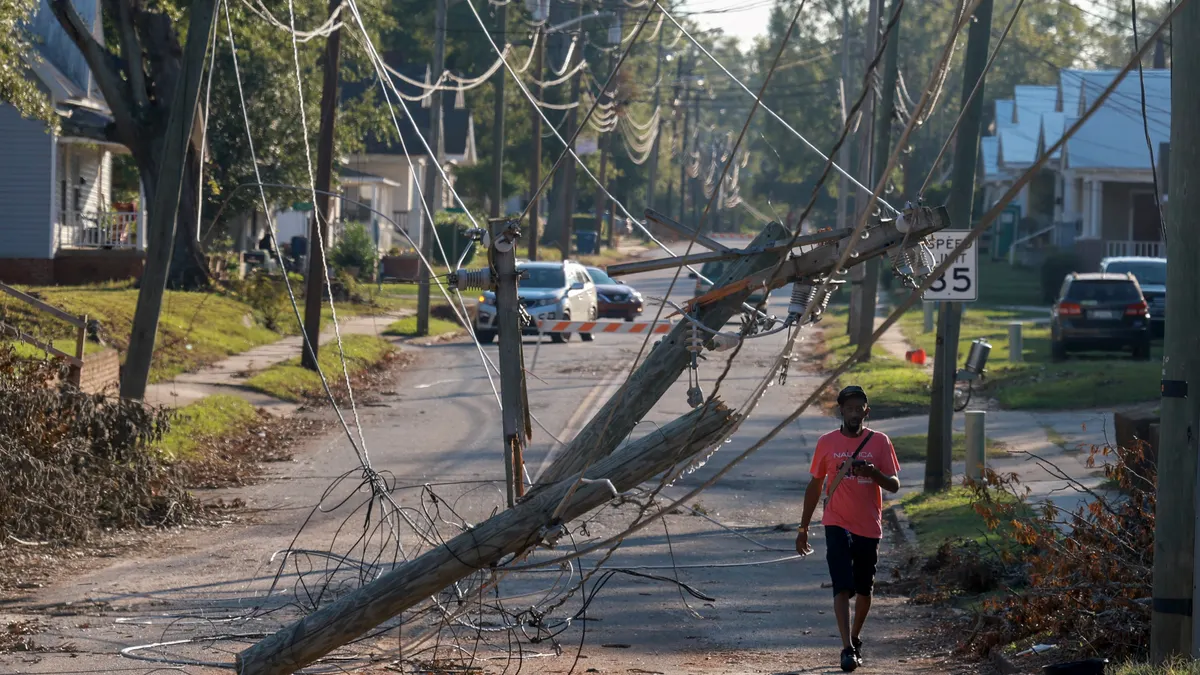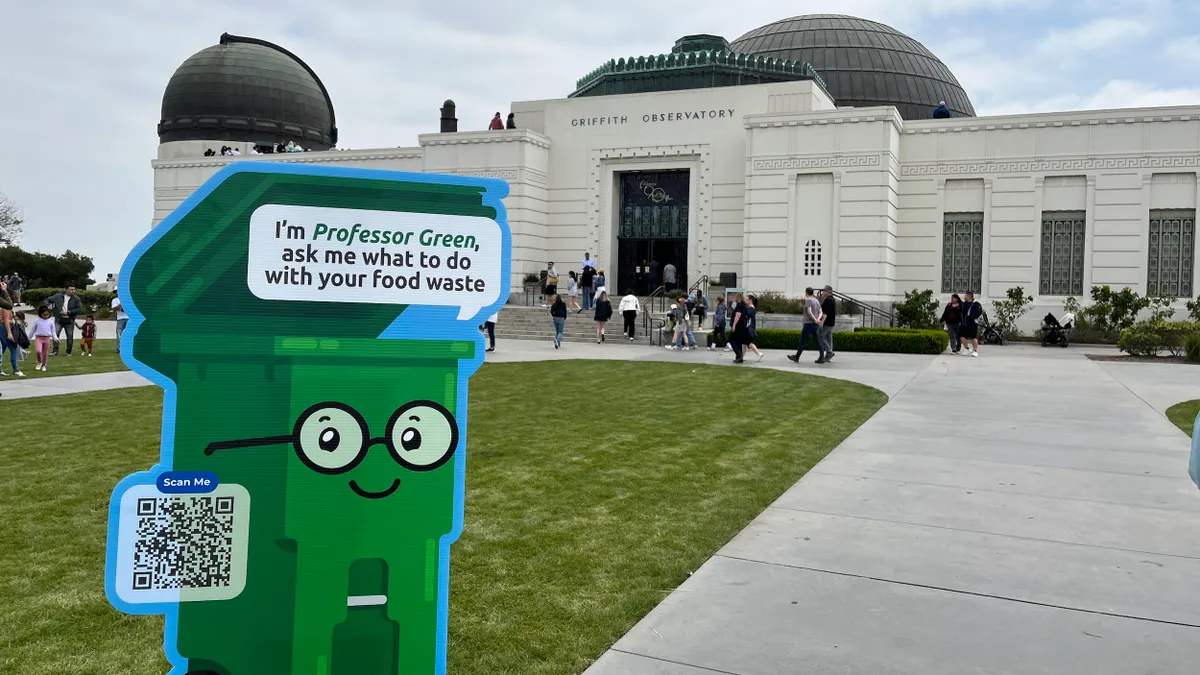California’s grid operator and other energy sector stakeholders want to use the wholesale power market to transform the state’s renewables over-generation from a problem to a solution by aligning technology, markets and contracts and through better long-term planning.
Recent average wholesale electricity market price fluctuations reveal a growing burden for the California Independent System Operator (CAISO). In 2016, the price during midday hours was about $18/MWh and spiked to $35/MWh during peak demand, according to Energy Department January to June data. This year, the midday price fell below $15/MWh and spiked to nearly $60/MWh at the peak.
The price differentiation follows CAISO’s load through the fluctuations of the now well-known duck curve. Prices are lowest when midday demand falls off but rise sharply as demand spikes later in the day. California’s 6,000 MW of rooftop solar exacerbate the load and price drop-offs that lead to the real concern — the need to meet the long, high ramp-up to peak demand.
California policymakers and others during an Oct. 18 session, Unlocking California's renewables "dividend," at CAISO’s 2017 Stakeholder Symposium, argued smart investments in supply and demand can turn these dynamics from costs to dividends. CAISO can develop resources to use the midday over-generation, flatten the ramp and lower the peak. Doing so, they said, can bring California lower electricity prices, a stronger economy, healthier air and reduced greenhouse gas emissions.
The key, said moderator John Danner, senior fellow at the University of California, Berkeley-Haas School of Business, is a strategy that is not “more or less business as usual.”
What are the dividends?
CAISO VP Mark Rothleder told the symposium the grid operator foresees a system transformation that will produce both supply and demand dividends.
California’s grid now oscillates between abundance at midday and scarcity during the ramp. But its several hours of up to 2,000 MW of over-generation can be marketed instead of curtailed, he told Utility Dive in an email.
Emerging demand-side resources already deliver downward flexibility during the ramp to the peak. “Sophisticated inverter based controls” can replace the conventional resources that now provide grid reliability, frequency response, voltage control and local responsiveness to contingencies, Rothleder wrote.
The CAISO market can send price signals to reshape demand and it can leverage regional collaboration through its energy imbalance market (EIM), to supplement supply, he added. “If we can make the most use of the new resources by maximizing both the energy and grid services they can provide, ratepayers who have invested in these resources will benefit.”
Carl Zichella, director of Western transmission for the Natural Resources Defense Council (NRDC), told Utility Dive in an email that dividends for the state from such steps have been estimated at $1.5 billion or more. They include energy and transmission cost savings from greater use of renewables and energy efficiency monetized through CAISO markets.
“Dirtier resources like coal, with high fuel costs, fare poorly in these markets,” he said. As cleaner resources serve more demand, lower power costs will allow consumers to channel savings into other sectors of the economy, which in turn will create additional economic benefits. “All California residents will benefit in one way or another.”
Cleaner resources will be used to both meet demand and provide grid services, Zichella added. Renewables will become more available as more of the West’s load serving entities (LSEs) join CAISO’s EIM or other organized markets and transmission system operators (TSOs) expand interconnections. That will shutter “dirtier” and “costlier” traditional generators, accelerating returns, he said.
Why a system with dividends is possible
The energy markets are already monetizing renewable generation, session panelists agreed. Innovation is now needed to obtain grid services from low-cost renewables over-generation.
James Sweeney, director of the Precourt Energy Efficiency Center at Stanford University, summarized the transition of the CAISO system in three high-level steps. For CAISO to create dividends from its oscillation between periods of abundance and scarcity, the power sector must first “use less traditional generation wherever clean resources are more economically attractive.”
Second, it must use every technology available to economically shift to clean energy for the generation of electricity. And third, it must “electrify everything that is economically feasible to electrify.”
Because the driver in all three of his recommendations is economics, “we really need to change the pricing system to make this all work,” Sweeney added.
CAISO VP Rothleder agreed. “If you can align technology, markets and contracts, you can create the right incentives,” he said.
Five years ago, he recalled, the need was for incentives that would allow new resources to be economically bid into the market and dispatched in a way that would shape production.
“We did that,” Rothleder said. “The next step is extracting grid services from those resources.”
Resolving a conundrum
To align technology markets and contracts, a conundrum must be resolved, he said. Because the technology allows renewables to provide grid services but the markets and contracts do not sufficiently value them, “maximizing renewables output may be at odds at times with maintaining grid reliability or extracting those services."
NRDC’s Zichella said another necessary factor to achieve dividends is planning. “Our climate goals stretch to the middle of the century and beyond, yet planning tends to be fairly short term,” he said. The result is an infrastructure investment shortfall unlikely to be fully alleviated by emerging demand-side technologies.
“Planning is needed to change direction in how we operate the bulk transmission and distribution systems,” he said.
That will require automation, which will require innovations in technology, communications and utility business models, he added.
A massive investment is needed, but it will lead to lower future costs, Zichella argued. “The innovation is already happening, but we need to plan farther ahead instead of building the car as we drive it.”
Zichella supports CAISO’s effort to unify the West’s 38 individual balancing authorities (BAs) into a fully integrated regional TSO that facilitates commerce across the region. “With a regional transmission system, we can build fewer resources and smooth variability and use markets as powerful tools,” he said.
It would allow the free exchange of the West’s abundant low-cost renewables to the benefit of all participants, just as CAISO’s EIM is already doing in real-time markets across eight Western states, he added.
“There’s a synergy in this dividend that applies not just to California, but to the region,” Zichella said. “California is not going to deal with climate change by itself. We can find a way for the rest of the West to participate in the new future we are building.”
Advanced Energy Economy Senior VP for External Affairs Steve Chadima said a key obstacle to a regional grid is that “energy has become politicized.” California must relinquish some of its control over CAISO if other BAs are to feel secure in participating. And other BAs must relinquish some control to the system operator.
But “political leaders who are invested in the current structure are very reluctant to give up what they perceive as control over this independent, non-profit corporation,” he said. "One Western political leader just told me he refused to turn control of his grid and utilities over 'to California’s Governor.'”
Stress the benefits “that really appeal to political leaders” when describing the regional grid proposal, Chadima urged other policymakers. “Talk about the economic benefits and the benefits to electricity ratepayers because it’s the political aspect that could trip us up in the end.”
NRDC’s Zichella said policymakers “are not that far apart” on the regional grid proposal. They understand that markets can give them access to cheaper electricity and to a market for their excess capacity.
“But the independence of the states and the right to their own energy policies can be protected,” he agreed. “We don’t need to tell Wyoming to close its coal mines. We only need to say, ‘we’ll buy your wind because this is a market in which everyone can benefit.’”
How to align technology, markets and contracts
“We have shifted from ‘what if’ to ‘what’s next?’” Berkeley’s Danner said. But what would a power purchase agreement need to cover to align grid services technologies with the market and “unlock” their dividends?
Rothleder said the CAISO markets are ready to value grid services from renewables but PPAs are not.
Stanford’s Sweeney said the PPA “needs to be a mutually beneficial contract.” An investor in a new technology or resource “needs to be motivated to make it available when the system needs it,” he said. “The off-taker needs to be willing to pay, to understand what is being paid for, and to get the benefit of the grid services extracted from that resource.”
There need not be losers in the shift to new contracts because the benefits can be shared equitably, Sweeney added. “There will only be losers if the alignment does not happen. Then you have inefficiencies and a potential loss of reliability.”
Some may take a what’s-in-it-for-me? attitude, he acknowledged. But if demand-side resources are as readily dispatchable as supply-side resources, they can be compensated. To make them dispatchable as grid services, real-time pricing and the software that allows customers to take advantage of it will be needed, he said.
That technology exists, but it is more complicated than supply-side dispatch and compensation, Sweeney added. On the supply side, the grid operator can adjust generators up and down, according to their contract terms.
On the demand side, the ISO cannot tell millions of participants when to watch television, heat water or charge cars, he said. Demand-side dispatchability requires new thinking about technology, contracts and price signals. Aggregators can also play a role. “But the bottom line is, we can’t keep thinking only of supply-side dispatch,” he said. “And economics must drive demand-side dispatch.”
Shift in values
Rothleder said obtaining dividends from using more renewables for more services requires a higher-level shift, from thinking in terms of “energy value” to thinking in terms of “economic values.”
The key economic values for the transition are “shaping value, service value and security value,” he said. “If they are compensated, providers of those values will come to the market. And they will lead to the right kind of transition.”
The right incentives will shape and balance supply and demand, he added. Service values for things like frequency response and voltage control will not be of the same magnitude as energy value but they are vital to reliability.
Security values could range from protections against climate change, like existing mechanisms to monetize decarbonization, to protections of system information, he said. “If we protect security correctly, we get security back through resilience,” he said.
The best tool for shaping, service and security values is a fully integrated regional system, Zichella said. “The dividend will be smaller without a regional market because fewer reserves will be shared and balancing authorities will need to build and operate duplicative generation, reserves and transmission. Renewables will be limited by these system inefficiencies.”
Advanced Energy Economy’s Chadima said the missing link, which will be difficult to build, is between consumers and system operators. “The difficulty is that the grid operator and the utilities want to be more efficient, but the consumer just wants to throw a switch,” he said. The transition to a system with dividends is, nevertheless, inevitable, he added, “because it is the thing to do.”
NRDC’s Zichella agreed. “Coal is not coming back. The prices for renewables continue to drop. These shifts are taking root and long-term investments are driving much of it, not national policy.”
CAISO’s Rothleder is also confident of a transition to a system with dividends. “But it will not be how we predict because technology will continue to evolve faster than we expect,” he said. “We can’t know now how it will transform other things and what new opportunities will emerge.”


















